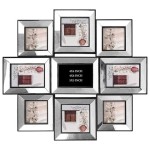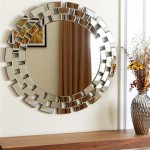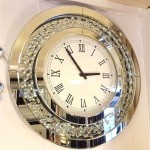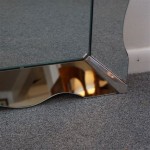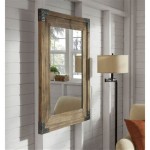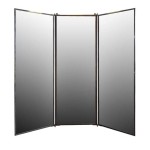Antique Dresser Mirror Hardware: A Guide to Identification and Restoration
Antique dresser mirror hardware adds character and authenticity to vintage furniture. Understanding the different types of hardware, materials used, and historical periods can assist collectors, restorers, and enthusiasts in appreciating these small but significant details. This guide provides an overview of antique dresser mirror hardware and offers insights into its identification and restoration.
Types of Antique Dresser Mirror Hardware
Several types of hardware are commonly associated with antique dresser mirrors. These include hinges, which attach the mirror to the dresser; knobs or pulls, used for tilting or adjusting the mirror; and decorative brackets or plates, serving both functional and aesthetic purposes. Backplates, often ornate, can conceal the mirror's mounting mechanism and add a decorative element. Finials, positioned at the top or sides of the mirror frame, contribute to the overall style and provide visual balance.
Materials and Construction
Antique dresser mirror hardware was crafted from various materials, reflecting the stylistic trends and manufacturing techniques of the period. Common materials include brass, bronze, porcelain, glass, and wood. Brass and bronze were often cast, stamped, or extruded, then potentially plated with other metals like nickel or silver. Porcelain hardware, popular during the Victorian era, featured delicate hand-painted designs. Wooden knobs and finials were frequently carved or turned and could be stained, painted, or left natural.
Identifying Hardware by Period
Recognizing the stylistic characteristics of different periods can help identify the age and origin of antique dresser mirror hardware. Victorian-era hardware (1837-1901) often exhibits ornate detailing, featuring flowers, scrolls, and intricate patterns. Art Nouveau hardware (1890-1910) emphasizes flowing lines and natural motifs, while Art Deco hardware (1920-1939) showcases geometric shapes and streamlined designs. The simpler, more functional hardware of the Arts and Crafts movement (1880-1920) often features hammered metal and straightforward designs.
Assessing the Condition of Hardware
Carefully assessing the condition of existing hardware is crucial before undertaking any restoration project. Look for signs of wear, such as tarnish, scratches, or corrosion. Check for structural damage, including cracks, breaks, or missing pieces. The extent of the damage will determine the appropriate restoration approach, ranging from simple cleaning to more complex repairs.
Cleaning Antique Dresser Mirror Hardware
Cleaning antique hardware requires gentle methods to avoid further damage. Mild soap and water can often remove surface dirt and grime. For more stubborn tarnish, specialized metal cleaners can be used, following the manufacturer's instructions carefully. Avoid abrasive cleaners or scrubbing pads, as these can scratch or damage delicate finishes. Porcelain hardware requires particular care due to its fragility. A soft cloth and mild soapy water are generally recommended.
Repairing and Replacing Hardware
Minor repairs, such as tightening loose screws or re-gluing detached pieces, can often be performed with readily available tools and adhesives. More significant damage, such as broken parts or missing components, may require the services of a professional restorer. When replacing missing hardware, finding exact matches can be challenging. Antique shops, architectural salvage yards, and online marketplaces can be valuable resources for sourcing period-appropriate replacements. Reproductions are also available, but using original hardware, whenever possible, preserves the historical integrity of the piece.
Preserving Restored Hardware
Once restored, appropriate care and maintenance will help preserve the beauty and functionality of antique dresser mirror hardware. Regular dusting with a soft cloth will prevent the buildup of dirt and grime. Avoid using harsh chemicals or abrasive cleaners. Protective waxes or lacquers can be applied to metal hardware to prevent tarnish and corrosion, but it's important to choose products that are compatible with the specific metal and finish. Storing antique furniture in a stable environment, away from excessive humidity or temperature fluctuations, will also contribute to the long-term preservation of the hardware.

Heavy Duty Dresser Mirror Support Brackets Made In The Usa

How To Repurpose An Old Swivel Mirror Confessions Of A Serial Do It Yourselfer

Vintage Antique Wood Gentleman S Dresser With Tilt Mirror And Original Hardware In 2024 How To Antiques Dressers Chests

Antique Arts And Crafts Period Dresser With Mirror Strap Hardware Art

Steel Mirror Swivels Paxton Hardware

Antique Victorian Dresser With Wishbone Mirror Marble Top Insert And Glove Boxes Original Hardware Working Locks Key Wren Wood Antiques

Antique Solid Wood Dresser With Detachable Swivel Mirror Original Hardware

How Can I Raise The Height Of Mirror On This Vintage Dresser Hometalk

Late 19th Century Antique Gentlemen S Dresser With Hat Box Mirror Chairish

Furniture Update With Hardware

